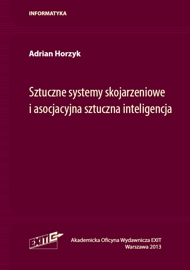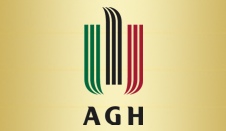RESEARCH |
Intelligent Neural Cognitive Systems based on the Associative and Context-Sensitive Semantic Approaches
My research comprises models, methods, applications, algorithmic and computational complexity issues, and various aspects of brain-like computing, developing various computational intelligence, artificial intelligence, and knowledge engineering systems with a special focus on Intelligent Cognitive Neural Systems based on the associative and context-sensitive semantic approaches. In my reseach and study, I address many important areas like neural networks, associative approaches, automatic evolution and genesis of neural networks and coginitive systems. One of the goals is to develop real practical reliable computer applications that implement these systems and can be applied in science and business to correctly group, cluster, classify, identify, recognize, approximate, compare, or analyze any given data. Another goal is to create such systems to automatically draw usuful conclusions about classes of objects and their behaviors.
Do you know how knowledge comes into being and would you like to use its model in computer science or for construction of cognitive artificial intelligence systems that can associate data in a brain-like way?
|
"Knowledge is power" used to say the ancient, but to take advantage of its benefits we have to work very hard. Currently using the technologies we have easier access to a variety of information, which gives us the ability to effectively learn. Knowledge is necessary to act intelligently, and thus also in computer modelling of various trials underway knowledge. This is not a simple issue, because knowledge is neither a collection of data nor a collection of information, nor a set of rules that can be easily mapped to IT systems. Knowledge is formed in our minds during our lifetimes after incoming data that can bring us some information value - then they become for us the information. Information can be a major rule or principle to facilitate our lives and those around us to understand the phenomena or processes. Knowledge is also closely linked to intelligence, since the larger and better-formed knowledge is the more efficient and smart our actions and reactions are. However, knowledge can form only in the active associative systems, such as our nervous system because its formation demands the opportunity to actively link together repeating subcombinations of input data and other combinations and reinforce these links suitably to frequency of their repetitions. Combinations and subcombinations are represented by neurons and associative relations (like similarity, sequence or context) between them by their interconnections. Consider why we can remind the successive stages of acts, rules, methods, algorithms, sequences or text? Why do we associate similar objects, actions and properties? The association is an indispensable piece of the puzzle leading to the formation of knowledge and intelligence. Unfortunately, modern computer science still does not use associative systems nor associative computation methodology which works well millions of years in biological minds. This methodology is interesting because it solves difficult processing tasks in the twinkling of an eye, and this happens despite the fact that our neurons can be activated maximally several dozen times per second. This activation frequency is very low in comparison to the rate of modern multi-core CPU clocks. On the other hand, the neurons have a huge number of connections (up to about 100 thousand), representing various associative relations. That allow them mapping of significant relationships between objects they represent and discriminate against other combinations of data... Currently, each of us carries his knowledge locked in his mind and has the ability to interact with other intelligent beings, both sharing with them their knowledge, as well as enriching his own via information received or submitted using the language, nonverbal communication or various type of media. Note that the transferred information may be differently interpreted and associated by its recipient. This is closely related to how the individual knowledge is formed in the mind of the recipient, and how the transferred data have been associated in his mind... |
ANAKG - Active Neural Associative Knowledge Graphs |
|
The development of artificial intelligence is a natural step in the evolution of intelligence related to the natural desire to cooperate with intelligent individuals. Thanks this, natural intelligence can rapidly develop and expand its capabilities. Artificial intelligence as well as natural must be based on systems capable to associate and generalize using limited context for the association because it is possible to automatically create a representation of the world in terms of certain classes of objects, and the formation of knowledge about it. Knowledge and can be invoked from different contexts of associations. In modern computing, data is stored in passive memories and processed by programs implementing some algorithms designed by people on the basis of the conclusions of their associations coming from experience, knowledge and intelligence. Data and their various combinations, and their sequences are actively represented in a network of neurons in the associative systems AS, in which they can create active interaction and associative relationships. It is possible only when modelling the functions of neurons at a time, which gives us the ability of mapping the processes of neuron relaxation and refraction, i.e. the gradual process of returning to the resting state of neurons and the process of gradual transient reduction of their reactivity. These processes play a very important role in the associative processes, such as considering alternatives (alternative associations). This allows associative systems to produce associations as a reaction to the activations of neurons that are variously and dynamically interconnected. It lets them to form a knowledge as in the biological associative systems BAS. Currently, there are developed artificial associative systems AAS and associative artificial intelligence that uses them. |


|

